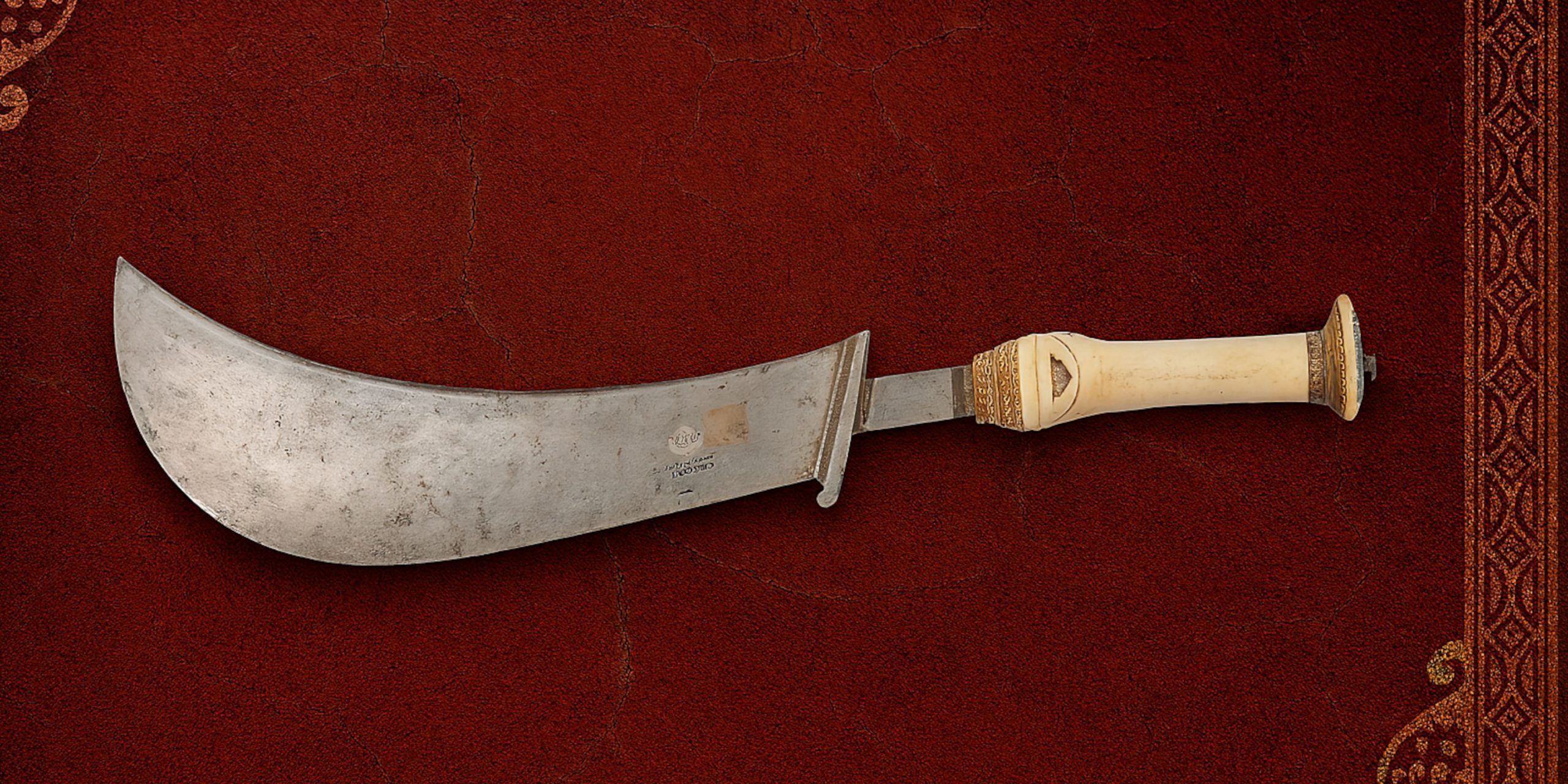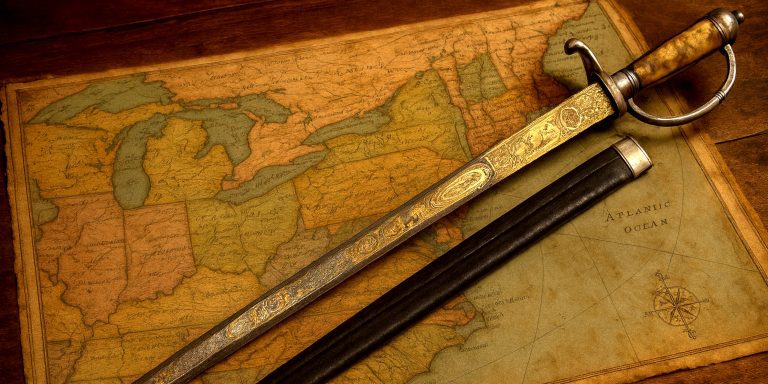
The Ayda Katti, occasionally spelled ayudha katti or adya katti, is a distinctive chopping sword originating from the Kodava (Coorg) people of Karnataka in southwest India. Initially a forest-clearing tool, it evolved into both a practical implement and a combat weapon from about the 17th century.
Specifications
| Feature | Detail |
|---|---|
| Overall length | Approx. 50 cm (variable) |
| Blade length | Around 38 cm |
| Width | Up to 9 cm |
| Weight | ~1.0–1.1 kg (2.5 lb) |
| Blade | Single edged, perfect chopping curve |
| Hilt | Made from wood or buffalo horn with an ovoid pommel; no guard |
| Sheath | Not typical; “prestige” swords carried by silver chain and brass ring |
History and Evolution
The Ayda Katti began as a gule (forest-clearing) tool among Kodava and North Malabar communities. Over time it transformed into a recognised warfare weapon. Two distinct types exist: “war” (plain pommel, heavier) and “prestige” (ornate, carried ceremonially) swords.
After anti-British riots in 1884, around 17,295 weapons were confiscated, including Ayda Katti, and most were destroyed, leaving few examples today.
Advantages and Disadvantages
- Advantages
• Weight and forward curve generate powerful chops.
• Compact, suitable for dense forests.
• Simple design aids maintenance.
- Disadvantages
• Unsuitable for thrusting or fine cutting.
• No guard means hand is vulnerable.
• Heavy use can fatigue the user.
Comparison with Similar Weapons
| Feature | Ayda Katti | Moplah Sword | Golok |
|---|---|---|---|
| Origin | Kodagu, India | Malabar coast | Southeast Asia |
| Blade style | Single-edge, forward curve | Broader, tip-heavy | Single/dual-edge, stout |
| Guard | None | None | Varies, usually none |
| Purpose | Chopping & warfare | Chopping, combat | Jungle tool |
| Carrying style | Belt or back bracket | Back, no sheath | Belt or scabbard |
The Moplah sword is larger and sculpted similarly, but lacks the Ayda Katti’s egg-shaped pommel.
Legacy
Though scarce, the Ayda Katti holds strong cultural and historical value for Kodava heritage. Surviving pieces appear in collections such as the Metropolitan Museum of Art, the National Trust (UK), and Horniman Museum.
Where to See
Find authentic Ayda Katti in museum collections:
• Metropolitan Museum of Art (NY) – 19th-century sword with belt.
• National Trust Collections (Kedleston Hall, UK) – Horn-hilted example with Coorg seal.
• Horniman Museum, London – Late 19th/early 20th-century sword
Collectors’ Guide – Auction and Price
- Examples occasionally surface via specialist dealers.
- A fine 18th/19th-century Ayda Katti (540 mm, horn-and-silver hilt) sold through Runjeet Singh’s gallery after being previously priced at about £3 in 1962.
- Ashoka Arts listed one around 1800 in untouched condition, over 7 kg, likely ceremonial, not trade.
- Due to rarity and condition variation, prices range widely, serious collector-grade pieces from £1,500 to over £10,000. Condition, provenance and ornamentation heavily influence values.
Collector’s Tips
• Confirm provenance, museum traces and seals boost value.
• Choose items in preserved original condition; avoid over-restored blades.
• Expect swords without scabbards or with period-specific todunga belts.
• Rarity means patience is essential, specialist networks and auctions are best bet.
The Seven Swords takeaway
The Ayda Katti embodies a unique martial tradition. Its curves reflect practicality and culture. Despite few items surviving, well-provenanced specimens offer collectors a rare glimpse into the resilient spirit of the Kodava warriors.



